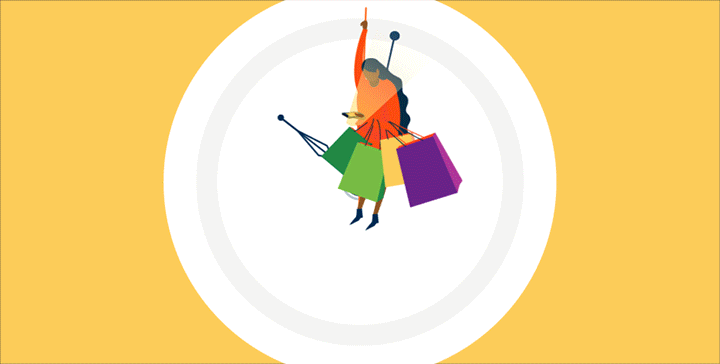Online and offline: two opposing worlds? Not really, especially when it comes to the world of retail.
We don’t have a crystal ball, but by monitoring market trends we are pretty sure that the future of commerce will be perfect harmony between digital and physical spaces.
To sell and grow today, it is essential to have a web presence and to maintain a tangible dimension, i.e. a symbol of concreteness and safety.
While it is true that an increasing number of users appreciate the speed and flexibility of online shopping, it is equally true that many customers still love physical contact with the goods and seller, which is only possible within the store.
Some customers simply won’t choose one of the two: it is better to sit on the fence and move between a brick-and-mortar store and an online one, reaping the best from each channel.
From this continuous fluctuation between online and offline, new consumer phenomena are born, ready to influence the future of retail, such as Showrooming and Webrooming.
What are they?
Showrooming: in-store to observe and feel but then purchases are made online
“Mmmmhhh … I’ll think about it for a moment and if I’m still certain I’ll go back!”. And so it is that after hours of explanations and attempts to convince, the sale has vanished.
It could be that the customer was not really interested, or… you are facing an episode of Showrooming.
But what does that mean? Showrooming is a consumer phenomenon where the customer uses the store as a showroom. They enter, observe, have the products explained in detail and then they leave, to make the purchase online and, perhaps, benefit from a more competitive price. The most fearless customers, sometimes, do not even wait to go home to finalise the online shopping: they fill their digital cart while they are still inside the physical store, to avoid wasting time.
The advantage of this mode of consumption? The opportunity to benefit from the advice of the expert and competent seller and the possibility to touch the product first hand, and then look for discounts and savings online and buy calmly, even in the evening, when traditional shops would be closed.
It’s a pity, don’t you agree?
Webrooming: online for information while purchasing in the store
There is also the other side of the coin: it is called Webrooming and it is the phenomenon that sees a customer scanning the web for information about a product of interest, and then going to a brick-and-mortar store to make the purchase.
Why do they behave as such? They get information online – sometimes spending weeks – because the purchase is relevant, important or particularly expensive, but then they choose to buy in the store, to avoid shipping, paying delivery costs or simply to be sure that the goods arrive intact and the item is easy to return.
A real boon for brick-and-mortar store owners – who benefit from customers already directed towards the purchase – and an albatross for those who have chosen to sell exclusively online.
Multichannel as a common denominator
Whether you are a physical or digital seller, there is one certainty: you are losing slices of potential consumers. Between those who come to the store and then turn their backs and buy on the web, and those who will chat for hours with the operator of your e-commerce but then buy in the store, you could be facing commercially unpaid efforts.
To reach consumers on different channels and find them in their path between online and offline, the solution is multi-channel: having a physical point of sale – even a dark store – also reachable through a smartphone. This allows you to offer the customer the maximum of reassurance and all the comfort of flexibility.
Specifically, you could join ShopCall: equip the sales staff with a smartphone or a device enabled for video calls and let users contact you via video call. With a video call, you can make a salesperson’s advice available to consumers, guiding them through their purchases, and at the same time allowing customers to buy from the comfort of their home, whenever they want.
With just one tool you get numerous advantages. Those looking for the reassurance of an expert consultant but not wanting to go to the store, can also find it online, more precisely via video call, and in a single solution they can inquire and buy flexibly, with no hassle.
On the other hand, those who want to sway between physical and digital will be happy to find their trusted store in both dimensions, to access the store either in person or via a smartphone. Those who choose to buy online to enjoy an economic advantage, could compensate the potential savings with the greater value offered by your shopping experience and evaluate that such a complete and consumer-centric shopping experience is worth more than a few euros discount.
Bingo!


